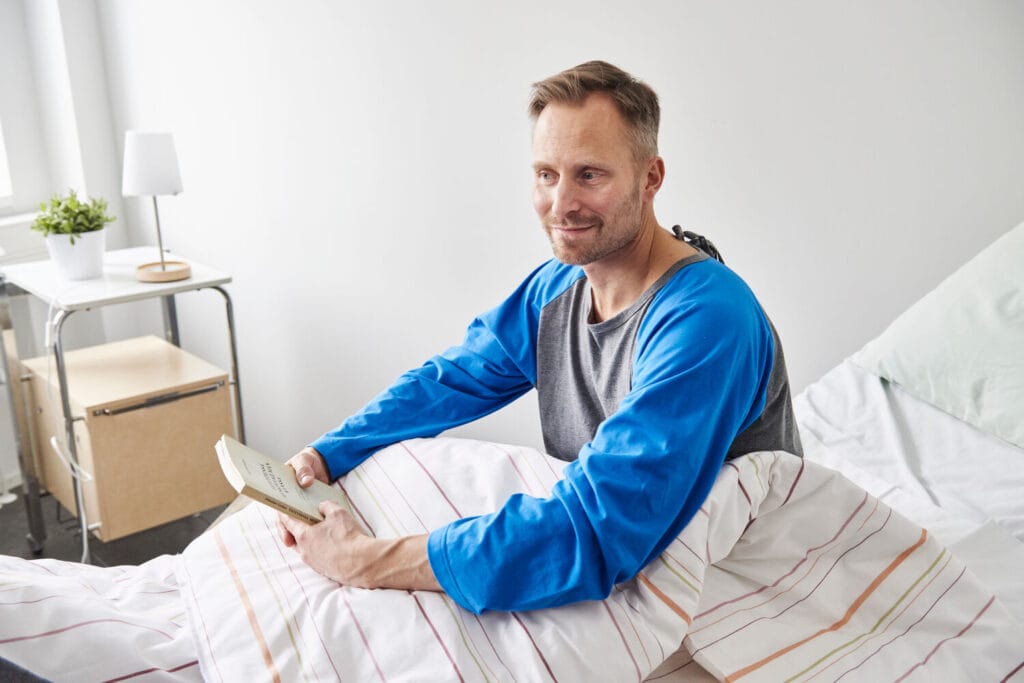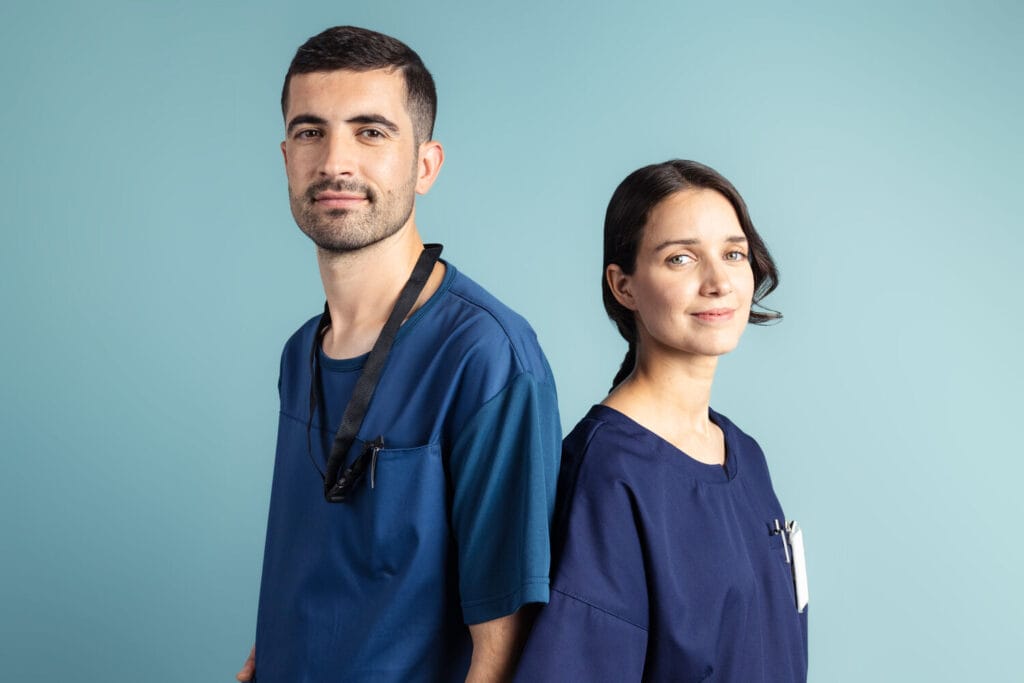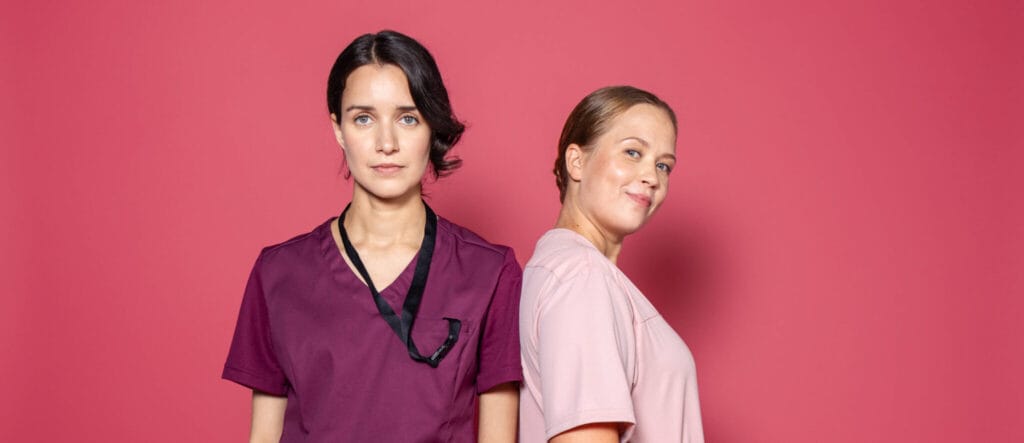
The role of healthcare linen in patient care
In healthcare, linen does more than just cover beds or clothe patients. It plays an essential role in maintaining hygiene, preventing infections, and ensuring patient comfort. From bed sheets to scrubs, the priorities in healthcare linen management revolve around safety, sustainability, and cost-efficiency. In this article, Lindström’s Director of Healthcare, Aniruddha Banerjee, shares his view on how healthcare linen shapes the patient experience and the healthcare environment.

Infection control and hygiene
Healthcare linen plays a significant role in infection control and minimising the risk of bacteria spreading. Proper handling and laundering significantly reduce the risk of healthcare-associated infections (HAIs).
Rigorous cleaning protocols, such as high-temperature washes, hospital-grade disinfectants, and autoclaving, are often used to keep linens pathogen-free. Following set practices every time protects both patients and employees. A consistent laundering schedule is key to preventing bacterial growth, ensuring a regular supply of fresh linens for every patient, and maintaining high hygiene standards.
Patient comfort and dignity
While hygiene is important, comfort should also be prioritised. Patients spend long periods in direct contact with linen, making material quality and fit an important factor affecting their well-being. Soft, high-quality fabrics help minimise skin irritation, especially for long-term patients.
Comfortable linen can contribute to a better patient experience and support recovery. Linens that fit well—like properly sized bed sheets and functional gowns—enhance patient comfort and dignity. They help avoid discomfort from pressure points and support a positive healthcare experience.
| Feature | High-quality linen | Low-quality linen |
| Softness | Soft and gentle on the skin | Rough and irritating |
| Fit | Well-fitted for patient comfort | Loose or poorly fitted |
| Durability | Long-lasting and retains quality | Degrades quickly with use |
Durability and sustainability
Textiles need to be durable yet sustainable for frequent use and laundering. Many healthcare facilities are adopting eco-friendly linen practices to lessen their environmental impact. Choosing durable fabrics that withstand rigorous cleaning extends linen life and ensures hygiene standards are met without frequent replacements. Sustainability is becoming more important in healthcare linen, with facilities increasingly using biodegradable detergents, energy-efficient laundry systems, and sustainable materials to reduce their environmental footprint.
Healthcare linen vs. Hospitality linen: what’s the difference?
The difference between healthcare and hospitality linen goes beyond fabric. In healthcare, the stakes are higher due to the risk of spreading infections. Here are the key differences:
Healthcare Linen: Focus on hygiene, durability, and patient safety. Accurate diagnosis, effective treatment, and following strict regulatory standards is prioritised, rather than aesthetic appeal. Non-compliance of textiles can pose risks to patient health, and spread bacteria.
Hospitality Linen: Prioritizes comfort, presentation, and luxury. Creating positive customer experiences and satisfying the guests is in center, including personalisation and enjoyment.
Effective stain removal is crucial in both industries, but the hospitality sector emphasizes the overall luxury and sensory experience of linens, while healthcare prioritizes functional cleanliness and hygiene. Another distinction is the classification of linens: hotels might have eight or nine classifications—ranging from face cloths to duvet covers—while a healthcare facility might have more than 40, from slider sheets to scrubs.
Inventory Management
Efficient inventory management ensures a steady supply of clean linen for uninterrupted patient care. A textile service partner like Lindström can help you optimise linen use, reduce waste, and ensure sufficient linens are always available, which prevents shortages and helps streamline operations. Efficient distribution systems also ensure that clean linens are available in every department, enhancing workflow and maintaining hygiene.
Staff training and compliance
Proper linen handling is only possible with well-trained staff. Training in hygiene protocols and handling practices helps maintain linen quality and safety. Comprehensive staff training programs ensure that all personnel understand proper handling techniques, the importance of hygiene, and how to maintain linen cleanliness and integrity.
Examples of what training for staff can include:
- Hands-on training on how to properly handle and store linen in order to avoid cross-contamination.
- Safety compliance to ensure employees adhere to strict hygiene and safety standards.
- Continuous support and regular trainings to keep everyone up to speed with the correct way of working.
Balancing quality and cost-efficiency with healthcare linen
Balancing linen quality while controlling costs is a constant challenge. Strategic procurement and efficient usage practices help healthcare facilities affordably provide high-quality linens. Outsourcing linen management to a reliable service partner can be a good option. They can help ensure that you always have ready-to-use, high-quality linen on hand, with a transparent service model. Reducing waste through proper handling and choosing long-lasting fabrics also helps manage costs without compromising quality.
| Balancing quality and cost | Lindström healthcare service | In-house linen management |
| Initial costs | No upfront costs | High initial cost of purchasing linen |
| Operations | Managed by Lindström | Requires in-house staff and equipment |
| Assurance | EN 14065 certified and compliant service process | Dependent on internal processes |
| Involvement | Minimal employee involvement in linen logistics | Full responsibility for handling |
Utlimately, an external partner aiding you with healthcare linen gives employees more time with patients. They can focus on their core caretaking tasks, instead of secondary responsibilities, such as textile management.
Enhancing patient care through effective healthcare linen management
Healthcare linen management is about balancing hygiene, comfort, durability, and sustainability. By focusing on infection control, patient comfort, sustainable practices, and efficient inventory management, healthcare facilities can enhance both patient experience and operational efficiency. These priorities ensure linen services meet regulatory standards and support better health outcomes and patient experiences.






